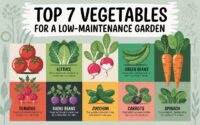How to Turn Your Lawn into a Productive Vegetable Garden
Published: 2025-10-19
Introduction: Why Convert Your Lawn into a Vegetable Garden?
Lawns are beautiful but often underutilized. By turning your lawn into a productive vegetable garden, you gain fresh produce, reduce grocery bills and support sustainable living. Because lawns consume water and fertilizers without yielding food, converting them into gardens makes ecological and economic sense.
Moreover, vegetable gardening improves soil health and biodiversity. It transforms passive green space into an active source of nourishment. Whether you have a small backyard or a sprawling lawn, this guide will walk you through every step of the transformation.
Planning Your Lawn-to-Garden Conversion
Before digging, planning is essential. Start by evaluating sunlight exposure. Most vegetables require at least six hours of direct sunlight. Therefore, choose a location that receives consistent light.
- Next, assess soil quality.
- Lawns often have compacted soil that lacks nutrients.
- A soil test can reveal pH levels and fertility.
- Based on results, amendments like compost or organic matter may be added.
- Additionally, consider water access.
- Gardens thrive when irrigation is convenient. Proximity to a hose or rain barrel simplifies maintenance. With proper planning, your lawn can become a thriving vegetable garden.
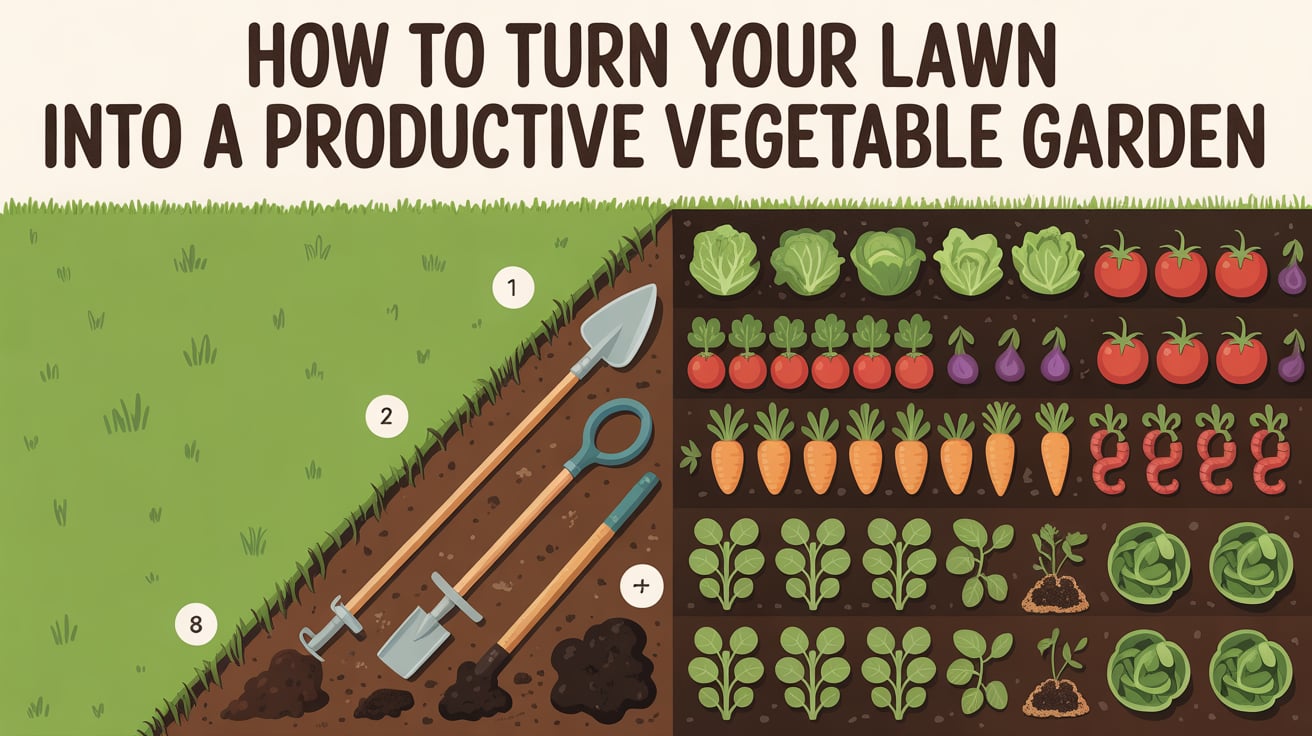
Step 1: Remove Grass Efficiently
Grass removal is the first physical step. Several methods exist, each with pros and cons. Manual digging is effective but labor-intensive. Sod cutters can speed up the process.
Alternatively, the no-dig method uses cardboard and mulch. Grass is smothered over time and soil structure is preserved. This method is eco-friendly and ideal for organic gardening.
Regardless of method, removed grass should be composted. Nutrients are recycled and waste is minimized. Once grass is cleared, the space is ready for soil preparation.
Step 2: Improve Soil for Vegetables
Healthy soil is the foundation of a productive garden. After grass removal, loosen the soil using a fork or tiller. This improves aeration and root penetration.
Next, add compost generously. Organic matter enhances fertility and moisture retention. Worm castings, aged manure and leaf mold are excellent additions.
If soil is sandy or clay-heavy, amendments are needed. Sand improves drainage while clay retains nutrients. Mixing both creates loamy soil, ideal for vegetables.
Moreover, raised beds may be built to control soil quality. They offer better drainage and reduce compaction. With enriched soil, your garden is ready for planting.
Step 3: Choose the Right Vegetables
Vegetable selection depends on climate, space and experience. For beginners, low-maintenance crops are recommended. These include lettuce, radishes, bush beans and zucchini.
Root vegetables like carrots and beets grow well in loose soil. Leafy greens thrive in partial shade. Tomatoes and peppers require full sun and regular feeding.
Companion planting enhances productivity. For example, basil improves tomato flavor and repels pests. Marigolds deter nematodes and attract pollinators. |
By choosing suitable vegetables, your garden becomes productive and resilient. Crop rotation and succession planting further boost yield.
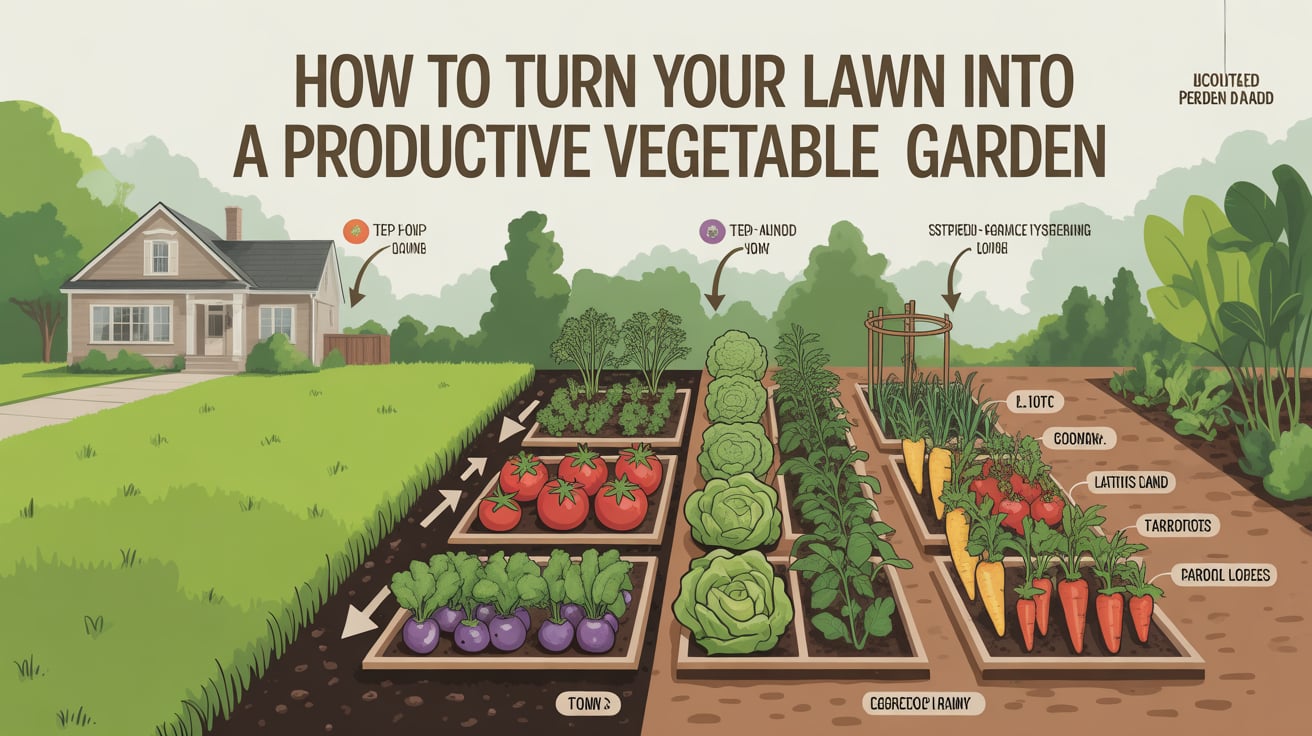
Step 4: Create Garden Beds and Paths
Garden layout affects accessibility and aesthetics. Raised beds are popular for lawn conversions. They define planting areas and reduce soil erosion.
Paths should be added between beds. Mulch, gravel or stepping stones prevent compaction and improve drainage. Beds may be arranged in rows, squares or keyhole shapes.
Spacing is crucial. Overcrowding reduces airflow and increases disease risk. Follow seed packet instructions for optimal spacing. |
Moreover, vertical gardening saves space. Trellises and cages support climbing plants like peas and cucumbers. With thoughtful design, your garden becomes efficient and beautiful.
Step 5: Install Irrigation and Mulch
Watering is vital for vegetable growth. Drip irrigation systems deliver water directly to roots. They conserve water and reduce evaporation.
Soaker hoses are another option. They are easy to install and suit raised beds. Manual watering with a hose or watering can is effective for small gardens.
Mulching retains moisture and suppresses weeds. Straw, wood chips and shredded leaves are excellent mulches. They also regulate soil temperature and improve structure.
Step 6: Maintain and Monitor Growth
Regular maintenance ensures productivity. Weeding should be done weekly. Mulch reduces weed pressure but vigilance is needed.
Fertilizing may be required. Organic options include compost tea, fish emulsion and seaweed extract. These nourish plants without harming soil life.
Pest control should be natural. Neem oil, insecticidal soap and row covers protect crops. Beneficial insects like ladybugs and lacewings may be introduced.
Monitoring plant health is essential. Yellow leaves, stunted growth or holes may indicate problems. Early intervention prevents crop loss.
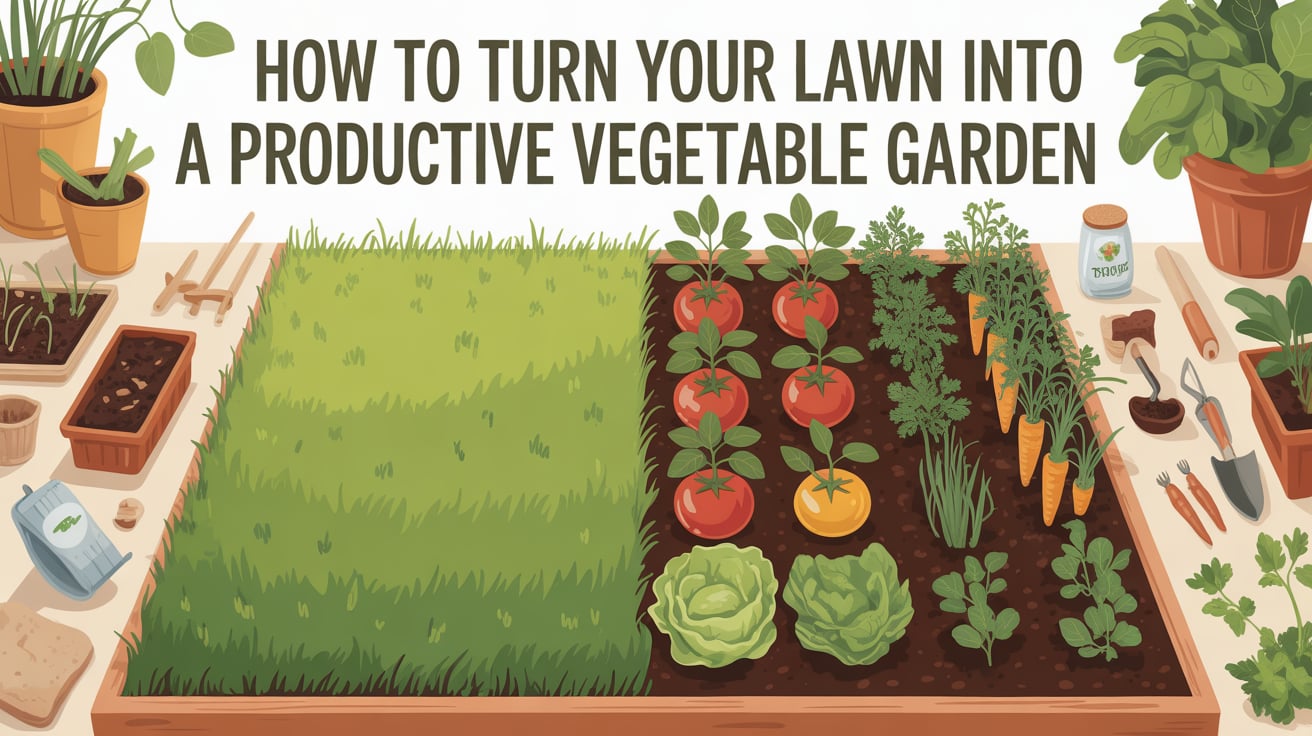
Step 7: Harvest and Enjoy Your Produce
Harvesting is the reward of gardening. Vegetables should be picked at peak ripeness. This ensures flavor and nutrition.
Leafy greens are harvested continuously. Root vegetables are pulled when mature. Tomatoes and peppers are picked when fully colored.
Excess produce may be preserved. Freezing, drying and pickling extend shelf life. Sharing with neighbors builds community and reduces waste.
With each harvest, your lawn-to-garden transformation proves its value. Fresh food, improved health and environmental benefits are gained.
Benefits of Turning Your Lawn into a Garden
- Food security: Homegrown produce reduces reliance on stores
- Environmental impact: Less water and fertilizer used compared to lawns
- Health benefits: Organic vegetables support nutrition and wellness
- Economic savings: Grocery bills are lowered over time
- Community building: Gardens foster sharing and education
Sources:
Tips for Success
- Start small and expand gradually
- Choose vegetables suited to your region
- Use compost regularly to enrich soil
- Rotate crops to prevent disease
- Keep a garden journal to track progress
These tips ensure long-term success and enjoyment.
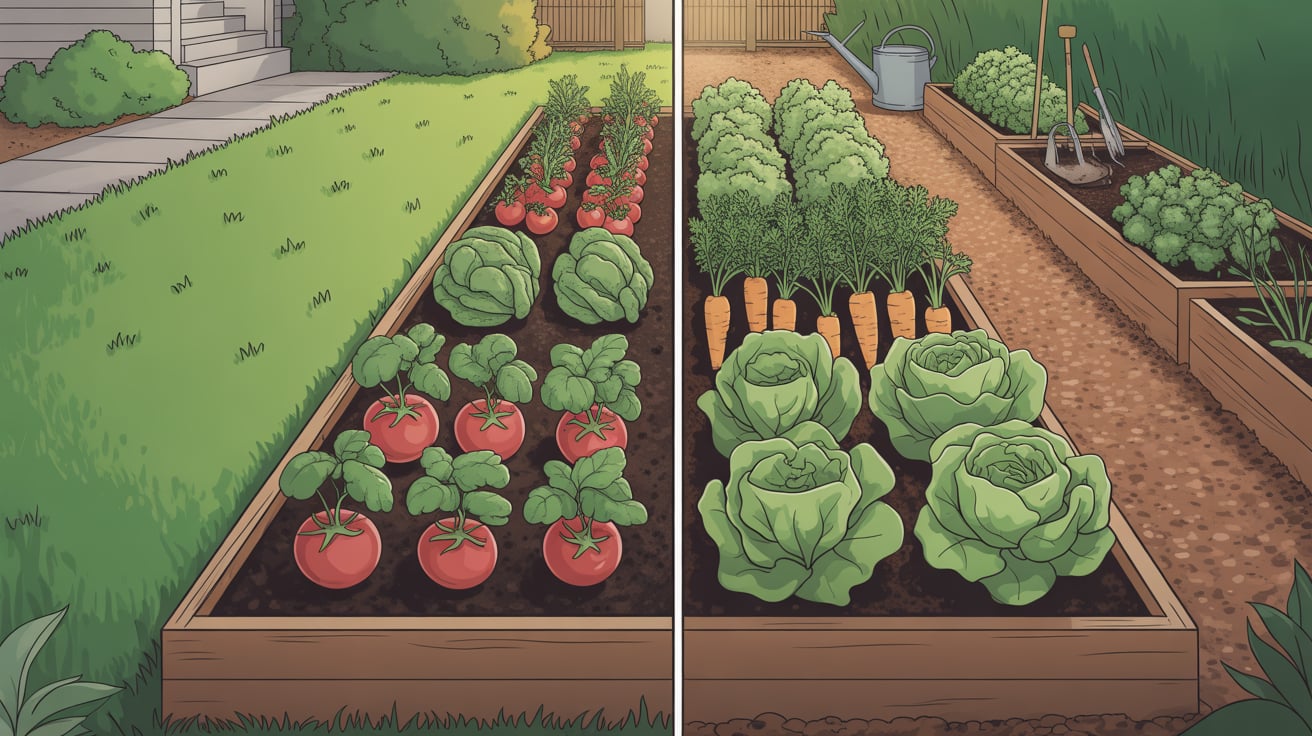
FAQs: Quick Answers for Gardeners
Yes the no-dig method uses cardboard and mulch to smother grass.
Lettuce radishes bush beans and zucchini are easy to grow.
Add compost and loosen soil to enhance fertility and drainage.
Raised beds offer better control and reduce compaction.
Watering is needed 2–3 times per week depending on weather.
Conclusion: Your Lawn Can Feed You
Transforming a lawn into a vegetable garden is empowering. It turns unused space into a source of nourishment and joy. With proper planning and care, any lawn can become a productive oasis.
By following the steps outlined in this guide, you gain fresh food, improve soil health and support sustainability. Whether you’re a beginner or seasoned gardener, the journey is rewarding.

- Be Respectful
- Stay Relevant
- Stay Positive
- True Feedback
- Encourage Discussion
- Avoid Spamming
- No Fake News
- Don't Copy-Paste
- No Personal Attacks



- Be Respectful
- Stay Relevant
- Stay Positive
- True Feedback
- Encourage Discussion
- Avoid Spamming
- No Fake News
- Don't Copy-Paste
- No Personal Attacks

